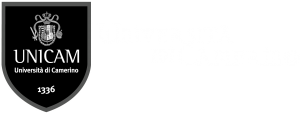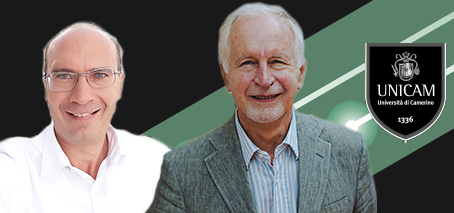FLEET is pleased to announce a new partnership with the University of Camerino (Italy), which will exploit strengths of both groups in the study of exciton superfluids.
The University’s Professor Andrea Perali and Professor David Neilson join FLEET as new Partner Investigators.
Professors Perali and Neilson study the theory of of exciton superfluids,and since 2012 have collaborated with FLEET’s Deputy Director Professor Alex Hamilton (UNSW) on superfluid studies key to FLEET’s research theme 2.
The dynamic Camerino-UNSW collaboration has already produced several important scientific advances.
For example, they recently developed a new theory explaining electron-hole ‘reverse drag’ and exciton formation, recently confirmed by experiment (University of Texas at Austin). Creation of this new quantum state in graphene opens up novel opportunities for quantum-technological applications, some of which will be developed within FLEET.
The dynamic Camerino-UNSW collaboration has already produced several important scientific advances:
For example, in 2013, a key result of this collaboration was the proposal of double-bilayer graphene as an ideal platform to make possible electron-hole superfludity at practicable temperatures and densities, finally observed this year,
 In another example: the Canerino-UNSW collaboration recently developed a new theory explaining electron-hole ‘reverse drag’ and exciton formation, recently confirmed by experiment (University of Texas at Austin). Creation of this new quantum state in graphene opens up novel opportunities for quantum-technological applications, some of which will be developed within FLEET.
In another example: the Canerino-UNSW collaboration recently developed a new theory explaining electron-hole ‘reverse drag’ and exciton formation, recently confirmed by experiment (University of Texas at Austin). Creation of this new quantum state in graphene opens up novel opportunities for quantum-technological applications, some of which will be developed within FLEET.
Meet FLEET’s two new Partner Investigators
Andrea Perali studies condensed matter physics at the University of Camerino and is Principal Investigator of the Ateneo superconductivity project, which led to the opening of Camerino’s SuperNano laboratory. His research interests include the theory of superconductivity and superfluidity, with particular focus on the BCS-BEC crossover, pseudo-gap and fluctuating phenomena in ultracold fermionic atoms and multiband superconductors and superfluids. A new research investigation led by Perali is curvatronics, the ability to control electronic properties in curved systems, as graphene bubbles.
David Neilson is a pioneer of electron-hole exciton interactions with wide experience in semiconductor theory and exotic quantum phases of the low-dimensional systems found in semiconductor devices. His recent work has been in the field of superfluidity in graphene bilayer devices. Other significant contributions include predicting new states of matter for electrons in coupled bilayers. He is also Professor of Physics at the University of Antwerp.
FLEET welcomes the opportunity to collaborate even more closely with Professors Perali and Neilson and the University of Camerino.
FLEET (The Australian Research Council Centre of Excellence in Future Low-Energy Electronics Technologies), which was officially opened 12 June 2018, is a collaboration of more than 100 researchers at seven Australian universities and 15 Australian and international science organisations.
The Centre’s mission is to develop a new generation of ultra-low energy electronics, using cutting-edge new fields of physics. The impetus behind such work is the increasing challenge of energy used in computation, which uses 5–8% of global electricity and is doubling every decade.
FLEET’s other national and international partners are the Australian Nuclear Science and Technology Organisation (ANSTO); the Australian Synchrotron; the Beijing Computational Science Research Center (CSRC), California Institute of Technology (Caltech); Columbia University, New York; Johannes Gutenberg University, Mainz; University of Maryland Joint Quantum Institute & National Institute of Standards and Technology; Max Plank Institute of Quantum Optics; the National University of Singapore; University of Colorado, Boulder; University of Maryland Center for Nanophysics and Advanced Materials; University of Texas, Austin; Tsinghua University, Beijing; University of Wurzburg and Wroclaw University of Science and Technology (WUST).



